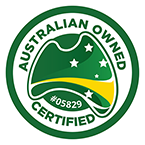There are different types of fire extinguishers are very important. Being prepared for any fire situation is vital, and you should always be aware of what types there are so that you can use the right one when the moment comes. Every type has its own properties, making them suitable for various purposes (such as fighting fires) and taking into consideration their capacity. Here is a list of ten different fire extinguisher types you might come across and some details about each type’s features.

The fire extinguisher is one of the most important safety equipment that you can have in your home and business. Fire extinguishers are used to put out fires before they start, or when they are already well underway. The type of fire extinguisher you use depends on the nature of the fire – fires where you want to fight them with the bare hands, or those involving flammable liquids, gas or heat. The least risky option is an ABC fire extinguisher, which stands for: Automatic-ABC (Ambient air). These are designed to protect against burning; however, in modern homes with central heating and central hot water systems these might be too powerful for small fires in rooms such as bathrooms and kitchenette cupboards, or when there is no flammable liquid present. However they can be used to put out a candle fire if it causes melting of wax or if it causes smoking of fabric which has been doused with petrol. A second type of ABC fire extinguisher is Alcohol based which work well at removing grease fires by smothering the fire with a fine mist sprayed on its surface.
The Different Classes Of Fire Are:
Class A – Combustible solids such as wood, paper, cloth or plastic
Class B – Flammable liquids such as petrol, Kerosene or paint
Class C – Flammable gases such as LPG gas or natural gas
Class D – Combustible metals such as aluminum or magnesium
Class E – Electrically energised equipment such as short-circuited machinery or overloaded electrical cables.
Class F – Cooking fats and oils such as vegetable oil, fats and lard.
Types of Fire Extinguisher
Water
Water fire extinguishers are commonly found both domestically and commercially and are recommended for use on class A fires. The all-red cylinder can identify these extinguishers with no coloured band. Water fire extinguishers are often found in storage facilities and warehouses. As with wet chemical and foam extinguishers, it’s important to remember that water fire extinguishers should never be used on a class E fire as it would potentially put you at risk of electrocution.
Foam
Foam fire extinguishers can also be referred to as AFFF extinguishers due to the aqueous film foaming foam that it contains. Foam fire extinguishers are used for class A and B fires. It is simple to identify a foam fire extinguisher by the blue band that runs around the top of the cylinder.
When foam fire extinguishers are used to extinguish a fire, they remove the element of oxygen by creating a blanket of foam on top of the fuel source of the fire as well as creating a cooling effect from the water.
AFFF fire extinguishers are generally used within warehouses, petrol stations and storage facilities and are not recommended for use in kitchens on class F fires.
Powder
Dry chemical fire extinguishers or otherwise known as ABE or BE are the most popular type of extinguisher. They can fight multiple classes of fire and are commonly installed in offices, homes and factories. A dry powder fire extinguisher is identified by its all red cylinder and white band that runs around the top of the tank.
Carbon Dioxide
Carbon dioxide, also known as CO2, is recommended for use on class E fires.They are identified by the black band running around the top of the red cylinder.
CO2 fire extinguishers contain a non-conductive and non-corrosive extinguishing agent, therefore, will cause no damage to electrical equipment. This type of fire extinguisher is often found in areas such as electrical server/data rooms, switch rooms, or next to electrical machinery. Carbon dioxide works by removing the oxygen element from the fire.
Vaporizing Liquid
Older types (BCF) have been withdrawn from general use.


